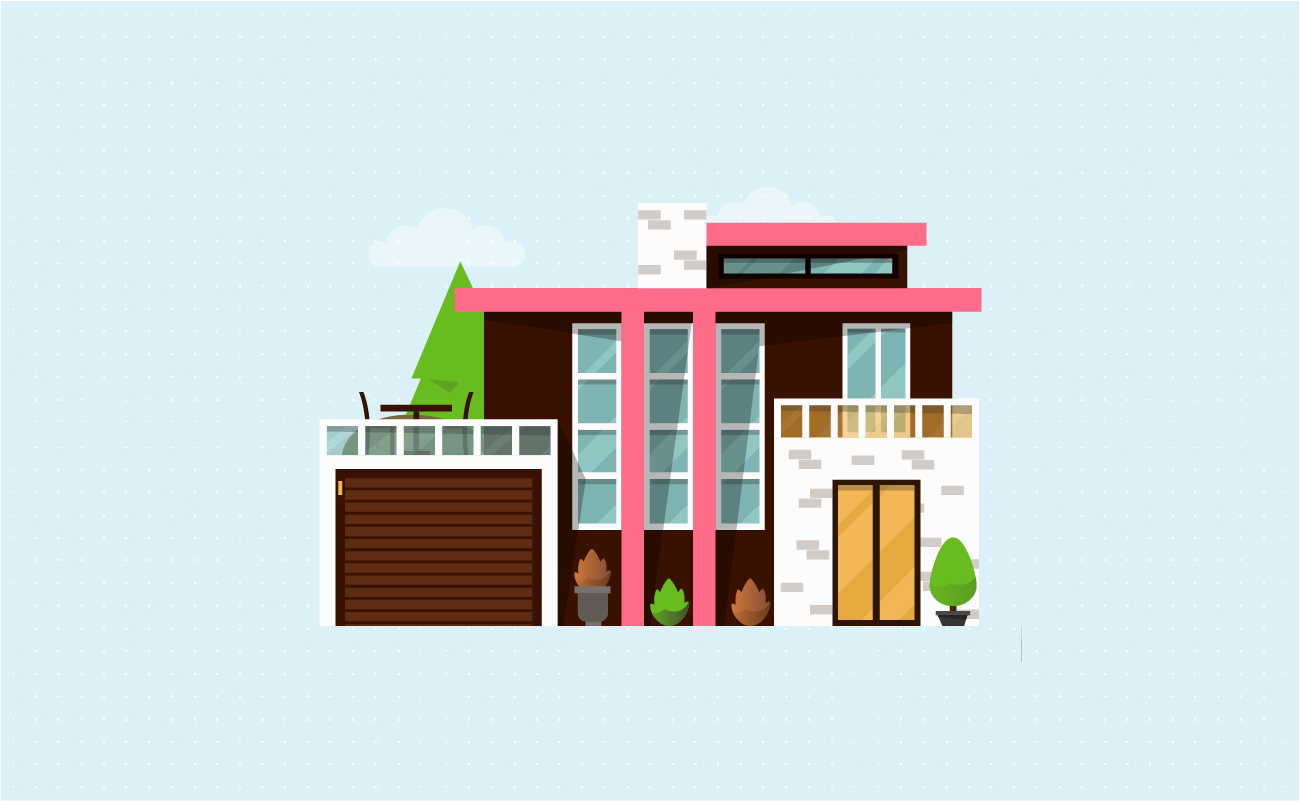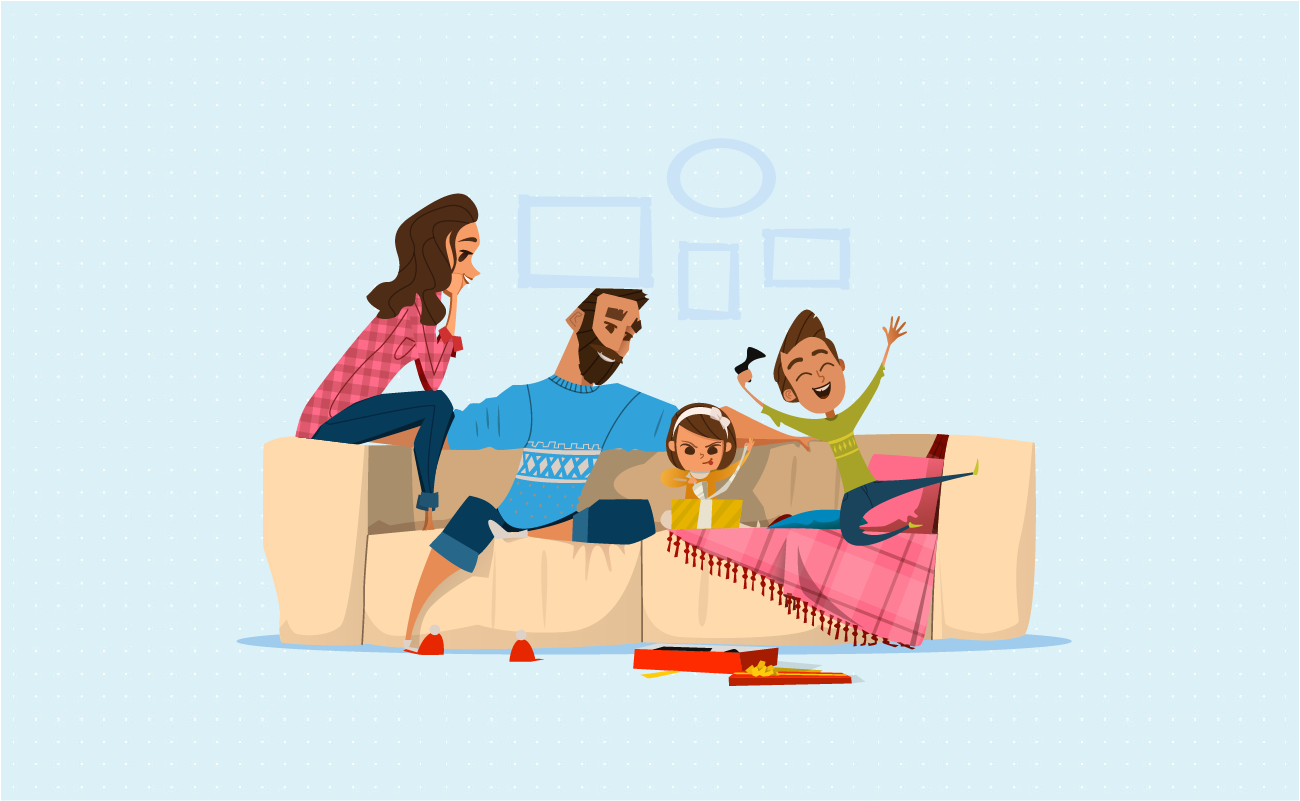Fixed Rates
30 yr
25 yr
20 yr
15 yr
10 yr
Compare Terms
Compare Rates
Real APR
Adjustable Rates
Qualification
Affordability
Renter Affordability
Rent vs Buy
Price per Square Foot
Jumbo
Home Sellers
 25 Year Fixed Mortgage Payment Calculator
25 Year Fixed Mortgage Payment CalculatorThis calculator helps home buyers estimate their monthly principal & interest payment along with the full PITI mortgage payment when buying a home using a 25-year fixed rate mortgage loan. Enter the home price, down payment, APR, loan term & other homeownership expenses and we will estimate the cost of homeownership. Once you have entered all of your details you can use the button at the bottom of the calculator to create a printable amortization schedule.
Guide published by Jose Abuyuan on October 1, 2020

When it comes to homebuying, securing the best mortgage deal takes effort. Apart from having enough down payment and a good credit score, you must choose the right loan term that fits your budget. This is important especially if you want a shorter term and save on interest costs.
The most common loan terms in the market are 30-year fixed mortgages and 15-year fixed-rate loans. It’s important to note that a shorter loan term results in higher payments but saves you tens of thousands of dollars on total interest.
However, did you know it’s possible to obtain a 25-year fixed-rate loan? While it’s not as short as a 15-year fixed mortgage, your monthly payments will not be as expensive. It can also save you a considerable amount on interest costs. Our guide below will discuss how this financing option works, as well as its pros and cons. We’ll help you decide if this option might suit you.
When you take a 25-year fixed mortgage, your interest rate is locked for 25 years. Since the rate is fixed, it assures your monthly principal and interest payments do not change for the entire life of the loan. Unlike adjustable-rate mortgages, it makes sure your payments remain within an affordable range. And because it’s not as long as a 30-year fixed mortgage, it helps you save 5 years’ worth of interest charges.
Interest rates for 25-year fixed-rate loans are also slightly lower than 30-year fixed mortgages. However, because of the shorter term, expect to pay slightly higher monthly payments. The good news is monthly payments for 25-year fixed terms are not as expensive as 15-year or 20-year fixed-rate loans. This is a more affordable alternative if you want a shorter term that fits your budget.
25-year fixed mortgages are also used as a refinancing tool by consumers. However, they are not as popular as 15-year fixed-rate loans. For consumers who want to refinance after a few years of building equity but cannot afford a much shorter loan term, this is a viable option. It’s much closer to your actual loan term, especially if you’ve paid off around 4 to 5 years of your mortgage.

Refinancing is taking a new loan to replace your existing mortgage. This allows you to obtain a lower rate and shorten your term. Borrowers must have a credit score of at least 620 to refinance their mortgage. It also costs between 2%-5% of your loan, which is a significant sum. To offset this steep cost, try to secure a rate that’s 2 percentage points lower than your old mortgage to ensure your break even point on refinancing is reached within a few years.
25-year fixed-rate terms are not a popular option in the U.S. More consumers are drawn to 30-year fixed-rate loans because of the low payments. It’s also much easier to get a larger loan with a longer term. 25-year mortgages are more common in countries like Canada and the United Kingdom, though in those countries 25-year "fixed" loans are actually loans with a fixed introductory period; similar to how hybrid adjustable-rate mortgages work in the United States.
Most homebuyers in America choose fixed-rate loans for the predictability of payments. It insures your interest rate stays the same even if index rates increase over the years. ARMs are more appropriate for financially stable borrowers who can cover the risk of increasing loan payments. Many consumers with ARMs also eventually refinance to a fixed-rate loan to lock a lower rate.
Fixed-rate loans follow a traditional amortization schedule. This is a schedule that shows the number of monthly payments you need to make to fully amortize your loan. With a 25-year fixed mortgage, it’s spread out into 300 payments throughout the term. It also breaks down how much of your payments go toward your principal and interest.
When it comes to payment distribution, more of your payments go toward interest during the first several years of your loan. This reduces your principal at a much slower rate. But once you reach the latter years of your loan term, more of your payments shift to the principal. As your principal decreases, so does your interest costs. As long as you keep making payments on schedule, your mortgage should be paid it off within 25 years.
Knowing your principal and interest payment is just one half of the equation. When it comes to calculating your total monthly mortgage payments, you should include homeowner’s insurance, property taxes, and homeowners association fees. Only then will you find out the true cost of your monthly payment. These fees can change over the years, so have some room in your budget in case they increase.
Depending on your mortgage, you might have to make extra mortgage insurance payments. If you have a conventional loan, you might be charged private mortgage insurance (PMI). On the other hand, if you take a government-backed mortgage, you might be required to pay mortgage insurance premium (MIP). These added costs can increase your monthly payments, so don’t forget to include them in your budget.
For example, suppose you got a 25-fixed-rate mortgage at 3 percent APR. Your home’s price is $350,000, and you make a 20 percent down of $70,000. Let’s use the calculator above to obtain your monthly mortgage payments.
| Loan details | Amount |
|---|---|
| Monthly principal & interest payment | $1,327.79 |
| Monthly taxes, insurance, & HOA | $300 |
| Total monthly mortgage payment | $1,627.79 |
Based on the example, if you pay 20 percent down, your loan amount decreases to $280,000. Your resulting monthly principal and interest payment will be $1,327.79. If your monthly taxes and insurance costs $300, your total monthly mortgage payment will be $1,627.79.
Of course, in reality, property taxes and insurance costs can be much higher. And over time, these costs can get more expensive. So set aside extra money to anticipate any payment increase in the future.

Though not all lenders offer 25-year fixed-rate loans, they can be found in the following types of conventional mortgages and government-backed home loans:
Conventional mortgages are offered by private lenders such as banks, credit unions, and mortgage companies. These loans do not receive direct funding from the government and are often bundled into mortgaged-backed securities that are guaranteed by Fannie Mae and Freddie Mac. To obtain a conventional loan, you must have a good credit score of 680. If your credit rating is 700 and above, you’re entitled to lower rates. That said, conventional loans are usually chosen by financially stable borrowers with good credit scores and consistent sources of income.
Conventional loans are classified into two main types:
Government-backed loans are mortgages that are directly funded by the governments. These loans were created to help low to moderate-income families afford homes. It’s also a good fit for first-time homebuyers who are looking for affordable mortgage options with relaxed qualifying standards. Because it’s federally funded, these loans also have lower rates and more affordable closing costs than conventional mortgages.
Borrowers can get the following government-backed home loans:
For instance, you can obtain an FHA loan with a credit score as low as 500. This requires a down payment of at least 10 percent. If you want to make a lower down payment of 3.5 percent, your credit score must be 580 and above. On the other hand, if you qualify for a VA loan or a USDA loan, you’re entitled to a zero down payment option. VA loans have flexible credit standards, but they accept borrowers with a credit score of at least 620. For USDA loans, borrowers are approved with a credit score of at least 640.
Financial experts often suggest choosing a shorter term to maximize interest savings. If you take a 25-year fixed mortgage, you remove 5 years’ worth of interest charges compared to a 30-year fixed-rate loan. Though it’s not as short as a 15-year fixed mortgage, it still gives you considerable interest savings. 25-year fixed mortgages also have slightly lower interest rates compared to a 30-year fixed loan.
Moreover, if you choose a 25-year fixed rate loan, your monthly payments will be more affordable compared to a 15-year fixed mortgage. This is beneficial if you’re on a tight budget, and if you cannot qualify for much shorter terms. And since a 25- fixed mortgage is longer than a 15-year fixed term, you can borrow a larger loan amount that you otherwise won’t get from a shorter term.
To understand how loan terms affect your payments, let’s take an example. The table below shows payments for a 15-year fixed mortgage, a 25-year fixed-rate loan, and a 30-year fixed-rate mortgage. Let’s suppose the home’s price is $350,000 and you made a 20 percent down worth $70,000.
| Loan Term | 15-Year FRM | 25-Year FRM | 30-Year FRM |
|---|---|---|---|
| Interest rate (APR) | 2.7% | 2.99% | 3.10% |
| Monthly principal & interest payment | $1,893.49 | $1,326.34 | $1,195.65 |
| Total interest | $60,827.45 | $117,900.74 | $150,432.53 |
Our example shows that interest rates are higher with a longer term. The 15-year fixed mortgage has the lowest interest at 2.7 percent APR, while the highest interest rate is the 30-year fixed loan at 3.10 percent APR. On the other hand, the 25-year fixed mortgage has a slightly lower interest rate than the 30-year term at 2.99 percent APR.
On the other hand, monthly principal and interest payments decrease as your loan term gets longer. The lowest monthly payment is $1,195.65 with a 30-year fixed mortgage. The highest monthly payment is $1,893.49 with a 15-year fixed mortgage. This is followed by the 25-year fixed loan with $1,326.34 per month.
However, there’s a trade-off for low monthly payments. Total interest costs are the highest with a 30-year fixed mortgage at $150,432.53. You’ll spend the least on interest costs with a 15-year fixed mortgage, which amounts to $60,827.45. That savings worth $89,605.08.
If you can’t afford the expensive monthly payments, a 25-year fixed mortgage is a good alternative. In this example, you’ll spend $117,900.74 on interest costs, which saves you $32,531.79. This is still a substantial amount that can help build your savings or fund other important expenses.
Choosing a 25-year fixed mortgage over a 30-year one can certainly help you save. But if you cannot obtain a 25-year fixed loan, there’s another way to reduce your term and interest expenses. You can do this by making extra payments to your mortgage.
Extra payments are most beneficial during the first few years of your loan. This helps reduce your principal faster, which lessens your interest expenses. To show you how this works, the example below lists how much you can add to your monthly payments to shave years off your loan term:
| Loan | Monthly payment | Extra $50 | Extra $100 |
|---|---|---|---|
| Loan term | 30 years | 28 years | 26 years, 5 months |
| Saved time | 0 | 2 years | 3 years, 7 months |
| Monthly payment | $1,195.65 | $1,245.65 | $1,295.65 |
| Total interest | $150,432.53 | $139,560.84 | 130,202.47 |
By adding $50 to your monthly payments, you can remove 2 years off a 30-year fixed-rate term. Meanwhile, if pay an extra $100 per month, you can pay off your mortgage earlier by 3 years and 7 months.
When it comes to interest savings, you save more with extra payments. In this example, you’ll spend $150,432.53 on interest expenses with a 30-year fixed mortgage. However, if you pay an extra $50 from the start of your loan, you’ll spend $139,560.84 on total interest costs. That’s savings worth $10,871.69. On the other hand, if you pay an extra $100 per month, your interest expenses will be 130,202.47. This saves you $20,230.06 on total interest costs. Thus, you’ll gain considerable savings by making higher extra payments to your mortgage.

25-year fixed mortgages offer more affordable payments than a 15-year fixed-rate loan. It also has a slightly lower rate compared to a 30-year fixed mortgage. The longer term also allows you to qualify for a larger loan compared to a shorter 15-year fixed mortgage. Moreover, you’ll pay your loan 5 years earlier if you take 25-year term over a 30-year term. This will save you a considerable amount on interest expenses.
On the other hand, not all lenders offer 25-year fixed-rate loans. For people who cannot take this option, they can make extra payments to reduce their term instead. Moreover, if you want more interest savings, a 15-year fixed mortgage will cut your interest cost in half. On the other hand, taking a 25-year fixed mortgage means you’ll build equity slower. You won’t pay your mortgage as fast as 15-year fixed loan.
To summarize the pros and cons of taking a 25-year fixed mortgages, we created the table below:
| Pros | Cons |
|---|---|
| More affordable monthly payment compared to a 15-year fixed mortgage | Slightly higher monthly payment than a 30-year fixed-rate term |
| Pay down your mortgage 5 years earlier than a 30-year fixed mortgage | Shorter terms like 15-year fixed mortgages and 20-year fixed mortgages pays your loan faster |
| Slightly lower interest rate than a 30-year fixed-rate loan | The interest rate is not as low as 15-year fixed-rate mortgages |
| Save thousands of dollars on total interest expenses compared to a 30-year fixed term | You’ll save more interest if you take a shorter term |
| The long term allows you to qualify for a larger loan | The long term builds equity slower |
30-year fixed-rate loans continue to dominate the U.S. housing market. This option is highly attractive to consumer because of the low monthly payments. The extended term also allows them to secure a much higher loan amount compared to shorter terms. This allows them to purchase more expensive homes or choose property at better locations. Despite the expensive interest costs, 30-year fixed mortgages are the mostly widely used loan purchase tool for homebuyers.
In June 2020, the Urban Institute reported that 30-year fixed-rate loans comprised 74.4 percent of new loans in the market. This was based on Housing Finance at a Glance: A Monthly Chartbook, August 2020.
The next most popular mortgage product is the 15-year fixed-rate loan. These comprised 16.4 percent of new loan originations in June 2020, which were mostly refinances. Many consumers take advantage of the low interest rates to refinance into more favorable terms. For Fannie Mae and Freddie Mac, refinancing increased to the 71 to 75 percent range, while Ginnie Mae’s rose to 49.2 percent.
On third place are adjustable rate mortgage, which comprised 1.8 percent of loan originations in June 2020. This shows that a substantial percentage of consumers still risk taking loans with changing rates. But since rates have dropped, consumers with ARM are also likely to refinance into a fixed-rate loan to lock in much lower rates.
Lastly, the report shows that 7.4 percent of the market share accounted for “Other” types of mortgage products. This includes 25-year fixed-rate loans, 20-year fixed mortgages, and 10-year fixed-rate loans. While these mortgage options may not be popular, they offer different benefits that address specific consumer needs.

A 25-year fixed-rate loan is a viable alternative if you want a shorter term with more affordable monthly payments than a 15-year fixed mortgage. It pays your loan 5 years earlier than the common 30-year fixed-rate loan. It also helps you save more interest costs compared to taking a 30-year fixed mortgage.
On the downside, 25-year fixed mortgages are not a popular option in America. You might take a while to look for a lender who offers this type of loan. Most people prefer taking a shorter 15-year fixed mortgage when they buy a house or refinance their loan. Furthermore, if you can’t obtain a 25-year fixed mortgage, you can still make extra payments to shave a few years off your term. Despite not being popular, a 25-year fixed-rate mortgage is still worth taking to maximize your interest savings.
Want to make extra payments to pay off your mortgage sooner? Read our guide on our additional mortgage payment calculator.
Jose Abuyuan is a web content writer, fictionist, and digital artist hailing from Las Piñas City. He is a graduate of Communication and Media Studies at San Beda College Alabang, who took his internship in the weekly news magazine the Philippines Graphic. He has authored works professionally for over a decade.